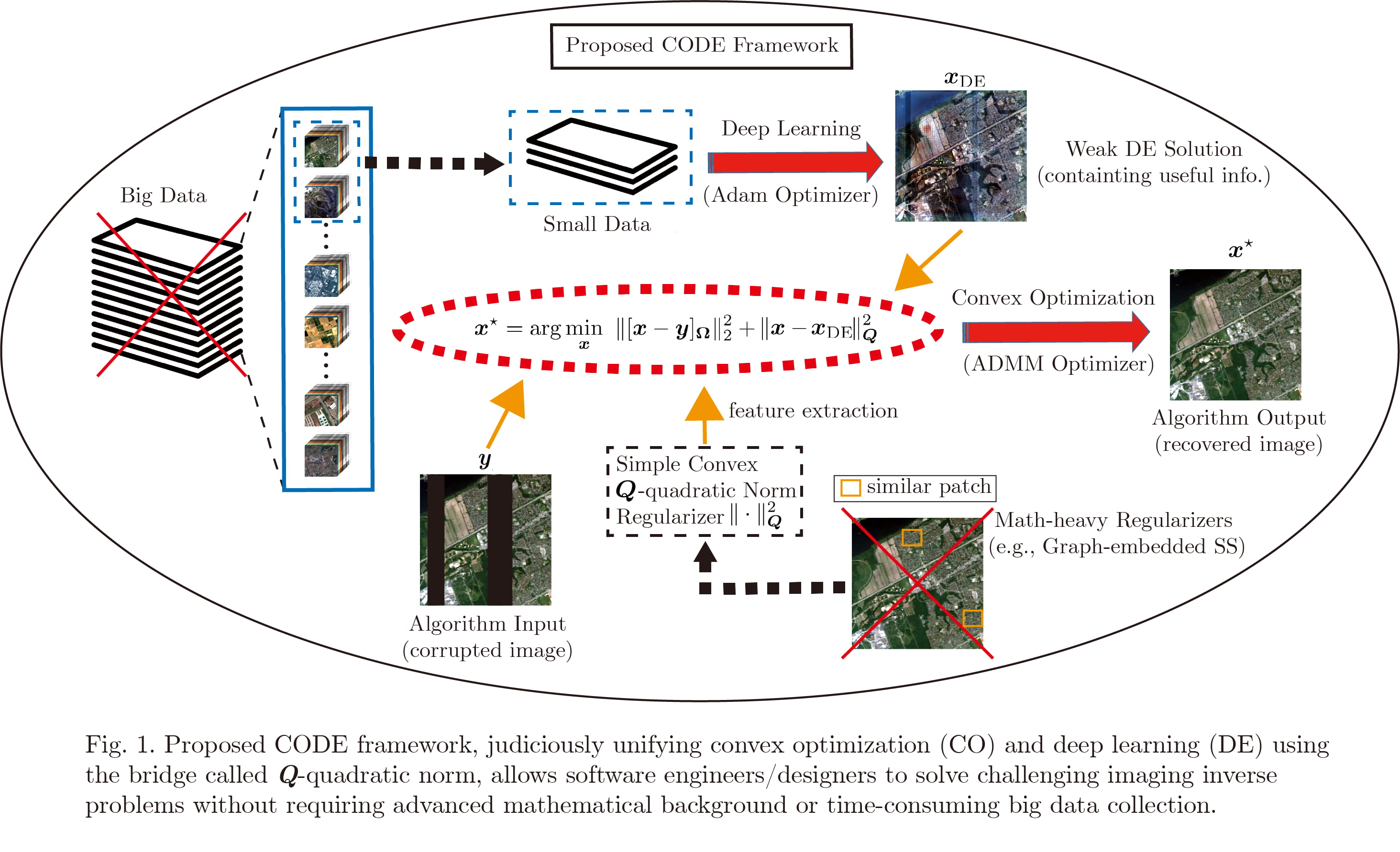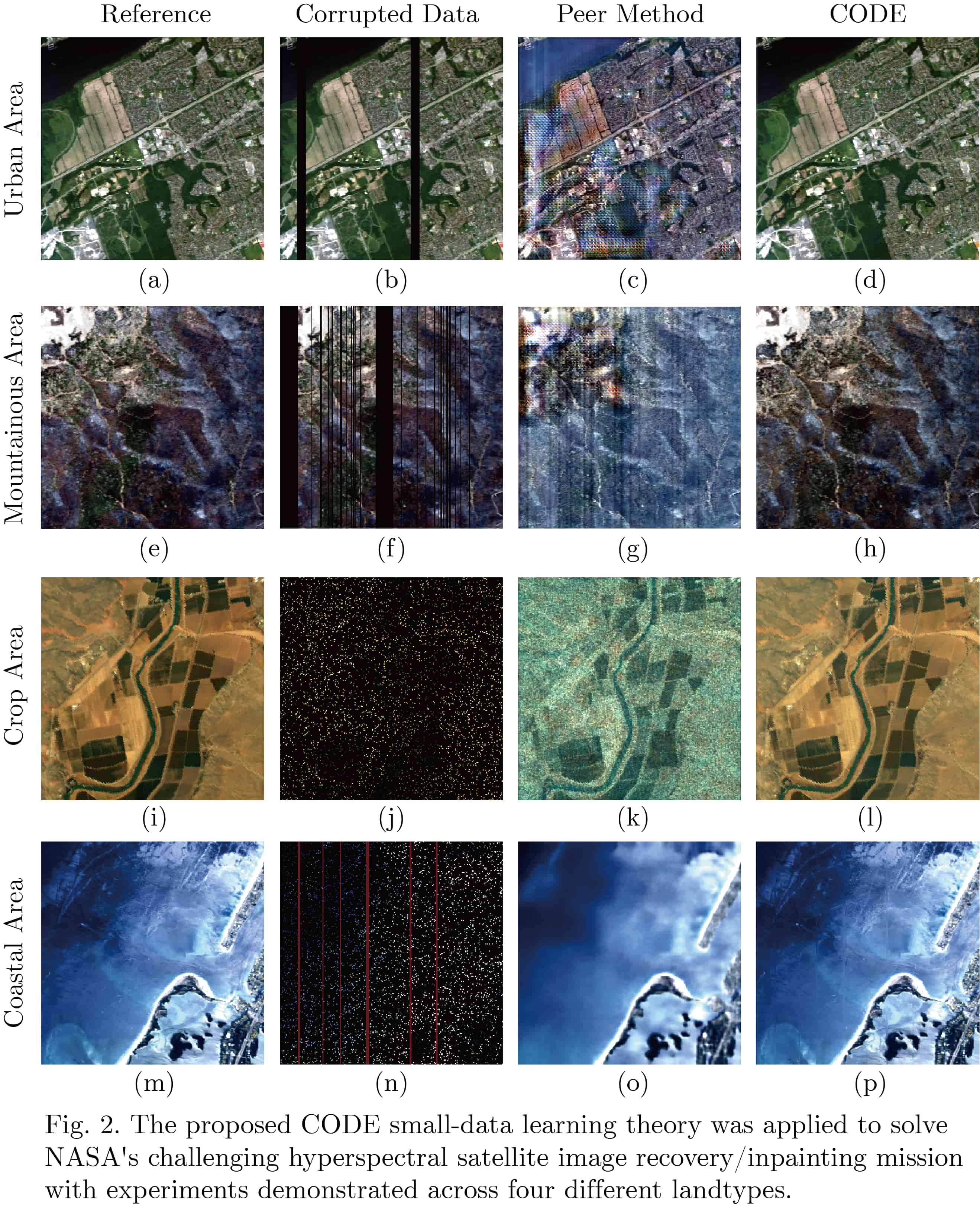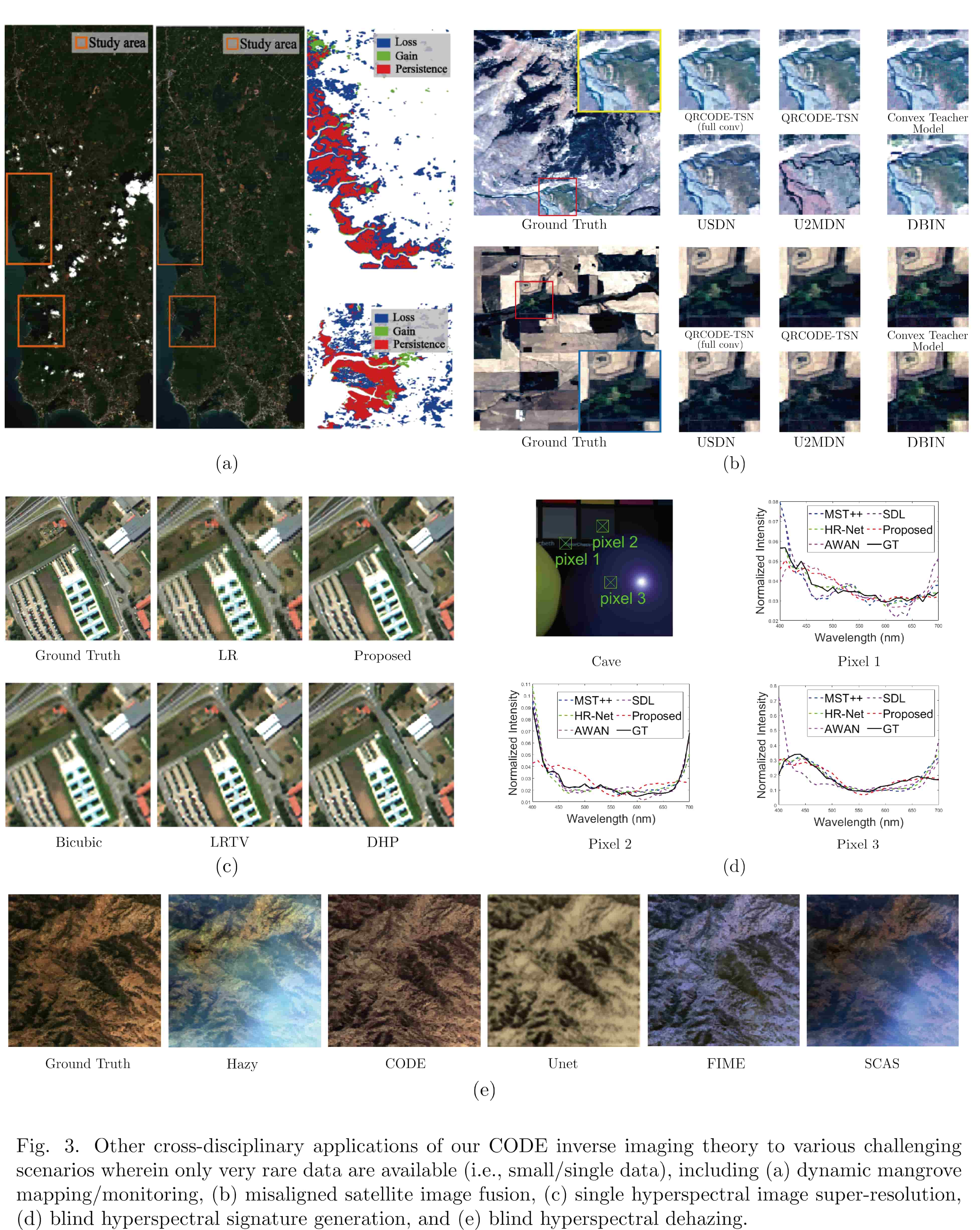| Technical Name | CODE (Convex/Deep) Small-data Learning for Satellite Inverse Imaging | ||
|---|---|---|---|
| Project Operator | Department of Electrical Engineering, National Cheng Kung University | ||
| Project Host | 林家祥 | ||
| Summary | Satellite inverse imaging technology is a key toward future space exploration. Two most popular imaging theoretical frameworks are convex optimization (CO)deep learning (DE). However, CO requires software engineers to be well trained with advanced mathematical backgrounds, while DE relies on purchasing expensive satellite big data. Our team, Intelligent Hyperspectral Computing Laboratory (IHCL), blends the advantages of CODE to invent a radically new small-data learning theory, termed CODE theory. CODE is capable of extracting key information embedded in the small data by merely using a simple convex mathematical function,has been successfully applied to reconstruct seriously damaged hyperspectral satellite images of NASA. |
||
| Scientific Breakthrough | CODE trickily bridges convex analysis with deep learning through the so-called “Q-quadratic norm”. Though just with simple mathsmall data, CODE still significantly outperforms traditional big data machine learning technologies on quite several tough imaging/learning problems see Fig. 3. For example, to recover NASA’s highly damaged hyperspectral satellite image, CODE amazingly achieves so using just 400 data (each containing 256x256 hyperspectral pixels), while previous state-of-the-art methods require at least 5000 data to ensure reasonable performance. Not only does it save more than US$230,000 in research funding, but it achieves also the best recovery results in terms of all the four key performance indices (including PSNR, SSIM). |
||
| Industrial Applicability | The importance of small-data machine learning to cost control in the industry is self-evident. Using the aforementioned application of NASA’s hyperspectral satellite image recovery as an example, CODE saves more than US$230,000 in software development costs. As it is difficult for most industry/academia departments to obtain sufficient satellite data, the CODE small-data learning theory becomes particularly important in the space industry (e.g., national defense) vigorously promoted by Taiwan’s government. In addition to numerous applications demonstrated in Fig. 3, the theoretical nature of CODE makes it quite suitable for other data-deficiency applications like developing computer vision/control software for autonomous driving systems. |
||
| Keyword | Space Industry Satellite Remote Sensing Small-data Learning Convex Optimization Deep Learning Imaging Inverse Problem Satellite Data Hyperspectral Image Image Processing Fast Algorithm | ||
- Contact
- Yi Chen
- ccchen11111@gmail.com
other people also saw







